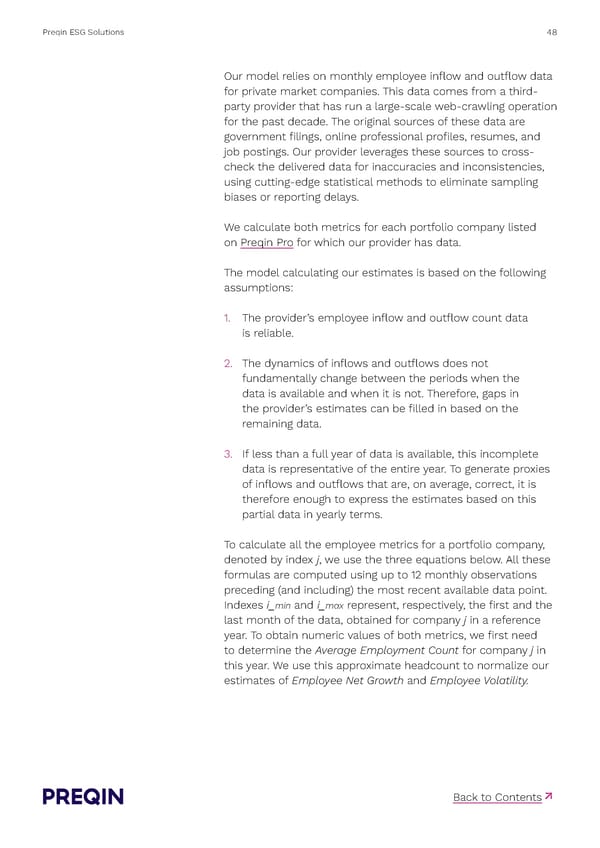Preqin ESG Solutions 48 Our model relies on monthly employee in昀氀ow and out昀氀ow data for private market companies. This data comes from a third- party provider that has run a large-scale web-crawling operation for the past decade. The original sources of these data are government 昀椀lings, online professional pro昀椀les, resumes, and job postings. Our provider leverages these sources to cross- check the delivered data for inaccuracies and inconsistencies, using cutting-edge statistical methods to eliminate sampling biases or reporting delays. We calculate both metrics for each portfolio company listed on Preqin Pro for which our provider has data. The model calculating our estimates is based on the following assumptions: 1. The provider’s employee in昀氀ow and out昀氀ow count data is reliable. 2. The dynamics of in昀氀ows and out昀氀ows does not fundamentally change between the periods when the data is available and when it is not. Therefore, gaps in the provider’s estimates can be 昀椀lled in based on the remaining data. 3. If less than a full year of data is available, this incomplete data is representative of the entire year. To generate proxies of in昀氀ows and out昀氀ows that are, on average, correct, it is therefore enough to express the estimates based on this partial data in yearly terms. To calculate all the employee metrics for a portfolio company, denoted by index j, we use the three equations below. All these formulas are computed using up to 12 monthly observations preceding (and including) the most recent available data point. Indexes i_min and i_max represent, respectively, the 昀椀rst and the last month of the data, obtained for company j in a reference year. To obtain numeric values of both metrics, we 昀椀rst need to determine the Average Employment Count for company j in this year. We use this approximate headcount to normalize our estimates of Employee Net Growth and Employee Volatility. ↗ Back to Contents
 Preqin ESG Solutions Methodology Page 47 Page 49
Preqin ESG Solutions Methodology Page 47 Page 49